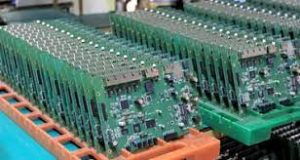Encountered in PCB Circuit Board Assembly
PCB circuit board assembly is a crucial step in the production of electronic devices. Often, the assembly process requires precision and attention to detail in order to ensure that the final product meets all of its design specifications and functions properly. However, the assembly process is not without its challenges. Some of the most common issues that can occur during this process include:
Soldering is a delicate process that needs to be handled with care to avoid problems like cold welding or solder bridges. These defects can cause the joints to fail and degrade the overall quality of the finished product. One way to reduce the risk of soldering defects is by ensuring that all components are placed correctly on the PCB and that they can be soldered together easily and efficiently. This can be accomplished by conducting a thorough DFM analysis prior to assembly and making sure that all components are capable of being soldered with a standard soldering tool.
Heat-generating components such as transistors, diodes, and capacitors must be properly mounted on a PCB to prevent overheating that can cause the board to warp. It is also important to minimize signal interference by placing sensitive signals away from high-frequency or high-power devices that can interfere with each other. This can be done by strategically positioning these types of devices in a manner that allows them to disperse heat evenly across the board.

Common Challenges Encountered in PCB Circuit Board Assembly
Chemical leakage is another challenge that can affect the final quality of a printed circuit board. If there are any holes or breaks in the circuit board that allow chemical to seep through, this could lead to corrosion and short-circuiting. One way to avoid this problem is by using a multi-layer circuit board with the right amount of dielectric material and by avoiding any areas where it may be necessary to use harsh chemicals.
Insufficient clearance is a common issue that can cause problems during the pcb circuit board assembly. This can be caused by placing components too close to each other, orienting them incorrectly, or by using a pick and place machine that doesn’t have the correct dimensions for the type of component being placed on the PCB.
The pads on a PCB need to be commensurate with their mates in order for the assembly process to work properly. If a pad is too large or too small for its mate, the pads won’t bond during soldering and will cause tombstoning. Fortunately, this can be avoided by having the PCB manufacturer conduct a thorough DFM check before the assembly process begins.
After the component mounting is complete, the pcbs then undergo a solder reflow process to solidify the solder paste and adhere the components to the board. This is a crucial step to ensure the proper connections between the components are made. The reflow process also helps to eliminate any shorts or dry solders in the circuit boards.